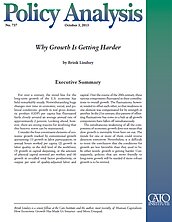Consider the four constituent elements of economic growth tracked by conventional growth accounting: (1) growth in labor participation, or annual hours worked per capita; (2) growth in labor quality, or the skill level of the workforce; (3) growth in capital deepening, or the amount of physical capital invested per worker; and (4) growth in so-called total factor productivity, or output per unit of quality-adjusted labor and capital. Over the course of the 20th century, these various components fluctuated in their contributions to overall growth. The fluctuations, however, tended to offset each other, so that weakness in one element was compensated for by strength in another. In the 21st century, this pattern of offsetting fluctuations has come to a halt as all growth components have fallen off simultaneously.
The simultaneous weakening of all the components of economic growth does not mean that slow growth is inevitable from here on out. The trends for one or more of them could reverse direction tomorrow. Nevertheless, it is difficult to resist the conclusion that the conditions for growth are less favorable than they used to be. In other words, growth is getting harder. Consequently, policies that are more friendly to long-term growth will be needed if more robust growth is to be revived.


